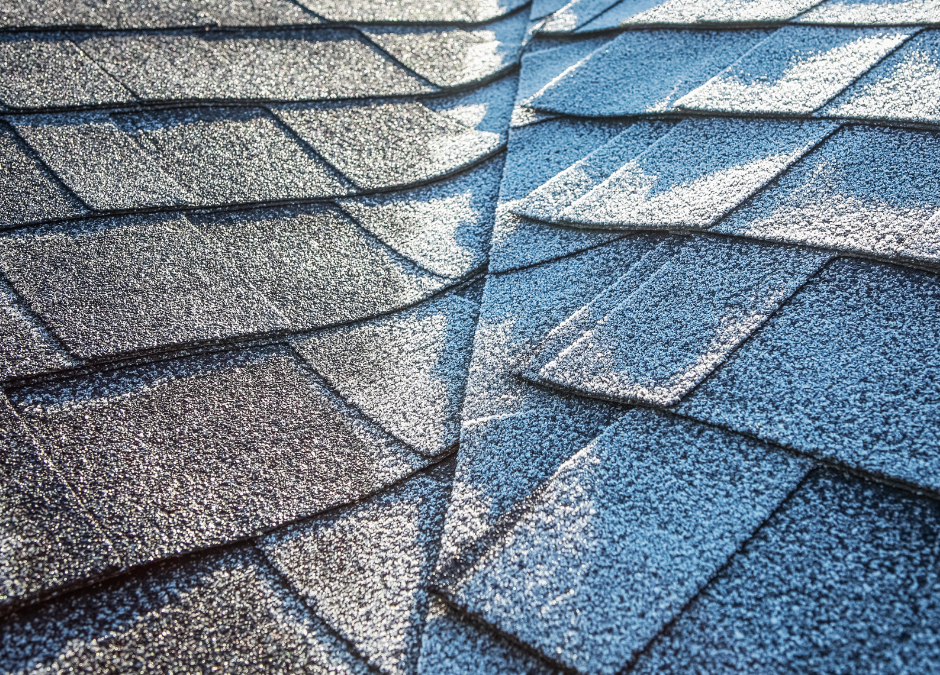As temperatures drop in the fall, the freeze-thaw cycle poses a threat to roofs across Minnesota. Many homeowners are familiar with the toll freezing and thawing can take on roads, sidewalks, and driveways, but did you know the same process can lead to significant wear and tear on your roof? Left unchecked, freeze-thaw damage can lead to leaks, structural issues, and costly repairs.
Understanding the Freeze-Thaw Cycle and Its Impact on Roofs
The freeze-thaw cycle is a natural process that occurs when temperatures fluctuate above and below freezing. Here’s how it works:
- Daytime temperatures rise above freezing, causing any accumulated snow or ice on your roof to melt into water.
- As temperatures drop overnight, this water refreezes, expanding in volume as it becomes ice.
- The expanding ice puts pressure on roofing materials, potentially forcing them apart.
Repeated freeze-thaw cycles can gradually worsen small cracks and weak points in your roof, leading to larger gaps and damage over time.
Common Freeze-Thaw Cycle Damage to Watch For
While all roofing materials are designed to withstand a certain amount of stress, no roof is immune to problems. Here are some common types of damage caused by the freeze-thaw cycle:
- Cracked or Broken Shingles
Shingles can be vulnerable to freeze-thaw damage. When water seeps into small cracks or gaps, it can freeze and expand, causing shingles to crack, curl, or become dislodged. Damaged shingles expose the underlying roof to moisture, leading to leaks and further deterioration.
- Ice Dams
Ice dams are a frequent issue in colder climates, where melting snow runs down the roof only to refreeze along the edges, creating a dam. As the dam traps more melting snow, water can back up under the shingles and into the roof deck, leading to leaks and potential water damage inside your home.
- Deteriorated Flashing
Flashing, which seals roof seams and protects areas where the roof meets other structures (like chimneys and vents), can become loose or cracked from repeated freeze-thaw cycles. Damaged flashing leaves gaps for water to seep into your roof structure.
- Worn Gutters and Downspouts
When ice forms in gutters, it can block the flow of water, causing overflow or sagging. Clogged or damaged gutters can worsen freeze-thaw damage, allowing water to pool on your roof or seep into your home’s foundation.
What You Can Do to Prevent Freeze-Thaw Damage
The best way to protect your roof from freeze-thaw damage is to be proactive. Here are some key steps to take:
- Clean Your Gutters and Downspouts
Clear out any leaves, debris, or other blockages from your gutters before the first freeze. Open, unclogged gutters help drain water away from the roof and foundation, reducing the risk of ice dams and other freeze-related issues.
- Improve Attic Insulation and Ventilation
An insulated and well-ventilated attic helps regulate roof temperature, minimizing snow melt and preventing the buildup of ice dams. This step also improves energy efficiency in your home, making it a win-win.
- Trim Overhanging Branches
Branches that hang over your roof can drop snow, ice, or debris, which can clog gutters or cause punctures during a freeze-thaw cycle. Trimming these branches back minimizes these risks.
- Schedule a Fall Roof Inspection
Scheduling a professional roof inspection before winter can identify any weak spots, cracks, or loose shingles. Repairing these areas early reduces the chance of water seeping in and causing freeze-thaw damage. This is especially important if you notice any signs of damage, like missing shingles, leaks, or visible ice dams.
Our roofing experts at 10K Construction can help you identify any minor issues before they escalate into more severe problems.
Ready to make sure your roof is prepared for winter? Schedule a fall inspection with 10K Construction to protect your home from freeze-thaw damage before the cold weather sets in. Contact us to get started today!
